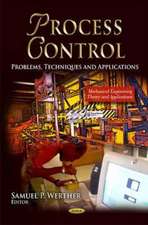The Robot: The Life Story of a Technology: Greenwood Technographies
Autor Lisa Nocksen Limba Engleză Hardback – 27 feb 2007 – vârsta până la 17 ani
Preț: 217.55 lei
Preț vechi: 374.84 lei
-42% Nou
Puncte Express: 326
Preț estimativ în valută:
41.63€ • 43.31$ • 34.37£
41.63€ • 43.31$ • 34.37£
Carte tipărită la comandă
Livrare economică 14-28 aprilie
Preluare comenzi: 021 569.72.76
Specificații
ISBN-13: 9780313331688
ISBN-10: 0313331685
Pagini: 224
Dimensiuni: 156 x 235 x 23 mm
Greutate: 0.48 kg
Editura: Bloomsbury Publishing
Colecția Greenwood
Seria Greenwood Technographies
Locul publicării:New York, United States
ISBN-10: 0313331685
Pagini: 224
Dimensiuni: 156 x 235 x 23 mm
Greutate: 0.48 kg
Editura: Bloomsbury Publishing
Colecția Greenwood
Seria Greenwood Technographies
Locul publicării:New York, United States
Notă biografică
Lisa Nocks is a historian who writes on the diffusion of scientific and technical knowledge to the public through the media. She has authored a number of articles on the history of media technologies and essays on the relationship between science fiction and science. She is currently teaching at Fordham University, Rose Hill, in the department of Communication and Media Studies.
Recenzii
Concise and direct to the point, Nocks' technography on the robot offers a rich overview of the systems we understand as robotic. It summarizes the 30-some year-long history of a plethora of ideas, experiments, and implementations that have found their places in our everyday lives. . . . Kudos to the author on the perfect marriage between coverage and length in this volume. In fewer than 200 pages, one finds great essays that do not leave too much out. Everything relevant to robotics today can be found here, albeit in an introductory form. But that is exactly what this book aims to achieve: to give us the grand picture of a grand technology, and motivate us to explore further. Highly recommended. General readers; upper-division undergraduates through faculty.
Following the format of a life story, Nocks provides a volume for students and general readers on the development of robot technology. The volume moves from the robot's forerunners, to its invention, prominence, and final decline. How the technology affected society and culture is interwoven with the description of its history. She begins as far back as myths in ancient times, discusses clock and toymakers of the seventeenth through nineteenth centuries, and considers twentieth century advances in control engineering, the incorporation of robots in industry, and artificial intelligence and recent developments that incorporate perception, independence, and artificial muscles.
Following the format of a life story, Nocks provides a volume for students and general readers on the development of robot technology. The volume moves from the robot's forerunners, to its invention, prominence, and final decline. How the technology affected society and culture is interwoven with the description of its history. She begins as far back as myths in ancient times, discusses clock and toymakers of the seventeenth through nineteenth centuries, and considers twentieth century advances in control engineering, the incorporation of robots in industry, and artificial intelligence and recent developments that incorporate perception, independence, and artificial muscles.






















